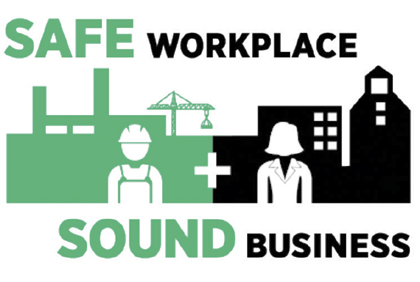The U.S. Department of Labor’s Occupational Safety and Health Administration launched its “Safe and Sound Campaign” recently, calling on employers to review their safety and health programs to protect workers, and reduce workplace injuries and deaths.
“Workplace safety and health incidents hurt workers and their families, and they cost businesses’ capital better invested in growing their business and creating jobs,” says Kim Stille, OSHA’s regional administrator in Kansas City. “By identifying and controlling job-related hazards that can lead to injuries and illnesses, businesses can improve their safety and health programs, save money and improve competitiveness.”
OSHA has initiated 12 fatality inspections in Kansas, Missouri, and Nebraska since Oct. 1, 2016—up from seven for the same period of Oct. 1, 2015 through Feb. 1, 2016—and found a significant increase in fatalities associated with confined space, entry, and trenching and excavating. Fatalities involving workers being struck by motor vehicles also doubled from two to four persons for the same time period.
“With just a phone call, companies can contact OSHA for assistance in achieving safety compliance. Working together with businesses, unions, and employees, we can reduce these sobering statistics and implement and sustain workplace safety and health programs that can help employees avoid preventable injuries and deaths,” Stille says.
Employers have proven that safety and health programs reduce the numbers of injuries and illnesses, and improve their bottom line. While there are different approaches to ensuring worker safety and health, all effective programs share three core elements:
Management leadership. Top management commits to establishing, maintaining and improving the program continually, and provides any necessary resources.
Worker participation. Employers invite workers to identify solutions. Improved worker engagement can lead to better productivity, higher job satisfaction and worker retention—lowering turnover and recruitment costs.
A systematic “find and fix” approach. Employers and workers examine their workplaces, proactively and routinely, to identify and address hazards before they can cause injury or illness.
Employers seeking to create a safety and health program should know that the process doesn’t have to be complicated or demand outside consultants be employed; there are some simple, do-it-yourself steps to get started. OSHA’s “Recommended Practices for Safety and Health Programs” page offers practical advice on how any organization can integrate safety and health programs.
OSHA also offers compliance assistance, tips, and consultation for small- and medium-size businesses, educational materials, training, and other information to employers and workers on common workplace safety hazards and how to prevent illness and injury—all at no charge.

“We don’t want businesses, especially small ones, to believe they cannot afford to protect their workers. OSHA provides good safety information and will work with employers to help them comply with safety and health standards,” Stille notes.
Each state has its own On-site Consultation Program. This free and confidential safety and health consultation program is targeted toward smaller businesses primarily; employers can find out about potential hazards at their workplace, improve programs already in place, and even qualify for a one-year exemption from routine OSHA inspections. Information is available at OSHA’s website: www.osha.gov/consultation.
TOP 10 MOST FREQUENTLY CITED OSHA STANDARDS VIOLATED IN FY2016
The following were the top 10 most frequently cited standards by Federal OSHA in fiscal year 2016 (October 1, 2015, through September 30, 2016):
- Fall protection, construction (29 CFR 1926.501)
- Hazard communication standard, general industry (29 CFR 1910.1200)
- Scaffolding, general requirements, construction (29 CFR 1926.451)
- Respiratory protection, general industry (29 CFR 1910.134)
- Control of hazardous energy (lockout/tagout), general industry (29 CFR 1910.147)
- Powered industrial trucks, general industry (29 CFR 1910.178)
- Ladders, construction (29 CFR 1926.1053)
- Machinery and Machine Guarding, general requirements (29 CFR 1910.212)
- Electrical, wiring methods, components and equipment, general industry (29 CFR 1910.305)
- Electrical systems design, general requirements, general industry (29 CFR 1910.303) ■
For More Information: Safe+Sound Week is a nationwide event to raise awareness and understanding of the value of proactive safety and health programs in workplaces. For more information and resources, visit www.osha.gov/safeandsoundweek.
_________________________________________________________________________
Modern Contractor Solutions, March 2017
Did you enjoy this article?
Subscribe to the FREE Digital Edition of Modern Contractor Solutions magazine.



